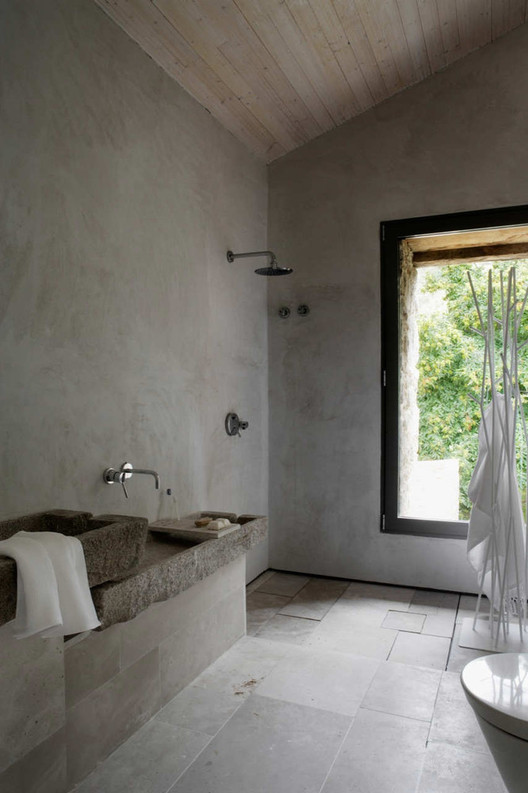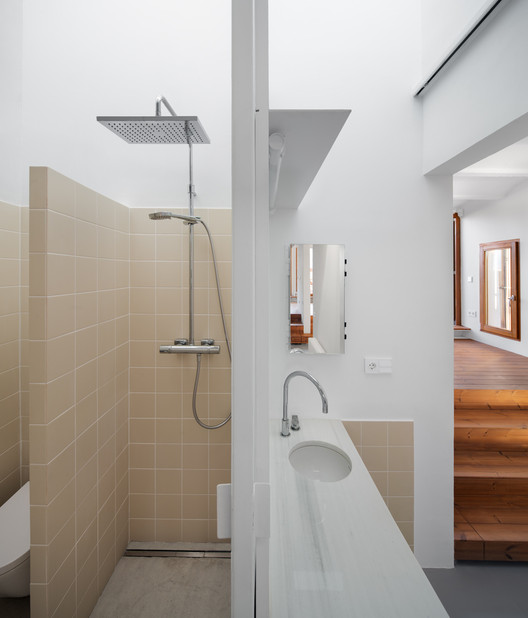
Because it doesn't include a bathtub, or require doors, screens, or curtains, the walk-in shower often makes bathrooms appear larger, cleaner, and more minimalist.
However, some precautions must be taken when designing them. Most importantly, the shower cannot be left completely open, even if it appears to be at first glance. Most designs incorporate a tempered glass that prevents water from "bouncing" out of the shower space, subtly closing the area. When this transparent division doesn't have a frame, the appearance of fungi due to accumulation of water and moisture becomes less likely.
.jpg?1568663024)
For this type of shower, effective design is imperative. Properly defining the location of the showerhead and the path of the water will help prevent water leaks into the rest of the bathroom. If you do not want to include a shower tray with a certain depth, therefore leaving the floors at the same level, you should add a slight slope that takes the water to the drain.

Depending on the design and style of the space, the shower walls can be made of different materials, but it is important to remember that it is a completely wet and humid space. Ceramic tiles, mosaics, or porcelain tiles are waterproof materials that are easy to clean and maintain, and there are anti-fungal and anti-moisture paints that further extend these possibilities. It is important to always integrate some kind of ventilation system.
Being a completely exposed space, showers can include storage integrated into the wall, avoiding the need to add other accessories.


How big should a shower be without doors? The measurements depend totally on the design and the requirements of the user, but a minimum width of between 75 and 80 centimeters is recommended. Generally, if using continuous floors without barriers, this type of shower can be used by the elderly or by people with reduced mobility, although the incorporation of specific dimensions and accessories should be considered, obligatorily increasing the minimum width to 90 cm.

Do you feel colder in a shower without doors? It depends again on the design. In addition to ensuring the correct insulation of the entire envelope of the bathroom, we must avoid air flows, so it is recommended to pay special attention to the location and characteristics of the windows and doors, as well as the glass that separates the shower from the rest of the space. The type of shower can make a difference: large format and "wide plate" devices, for example, release abundant hot water onto the user, preventing the body from being exposed at certain points.
Check out a series of projects that have included showers without doors or curtains in their bathrooms.






.jpg?1568662747)













.jpg?1568662362)












.jpg?1568662362)